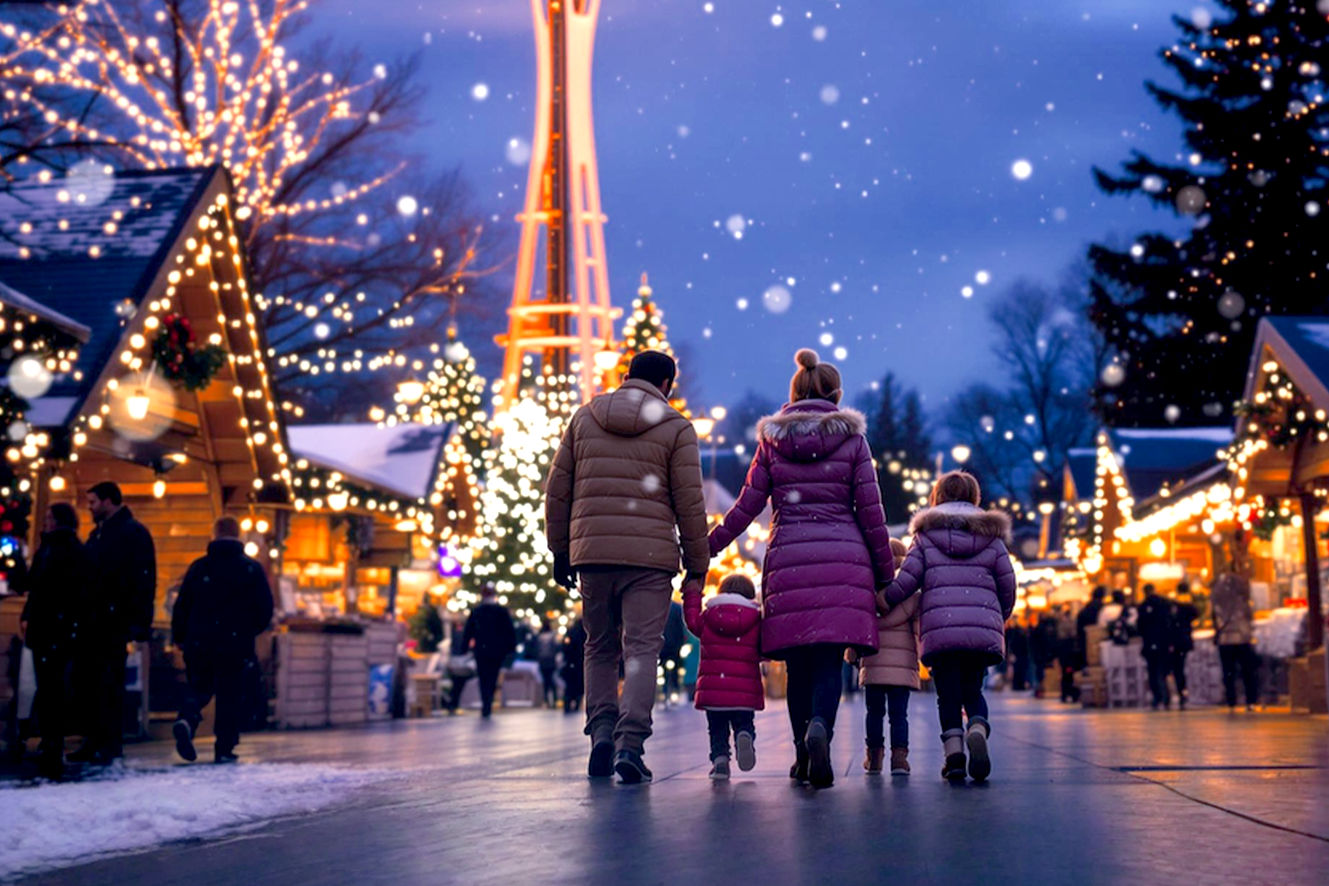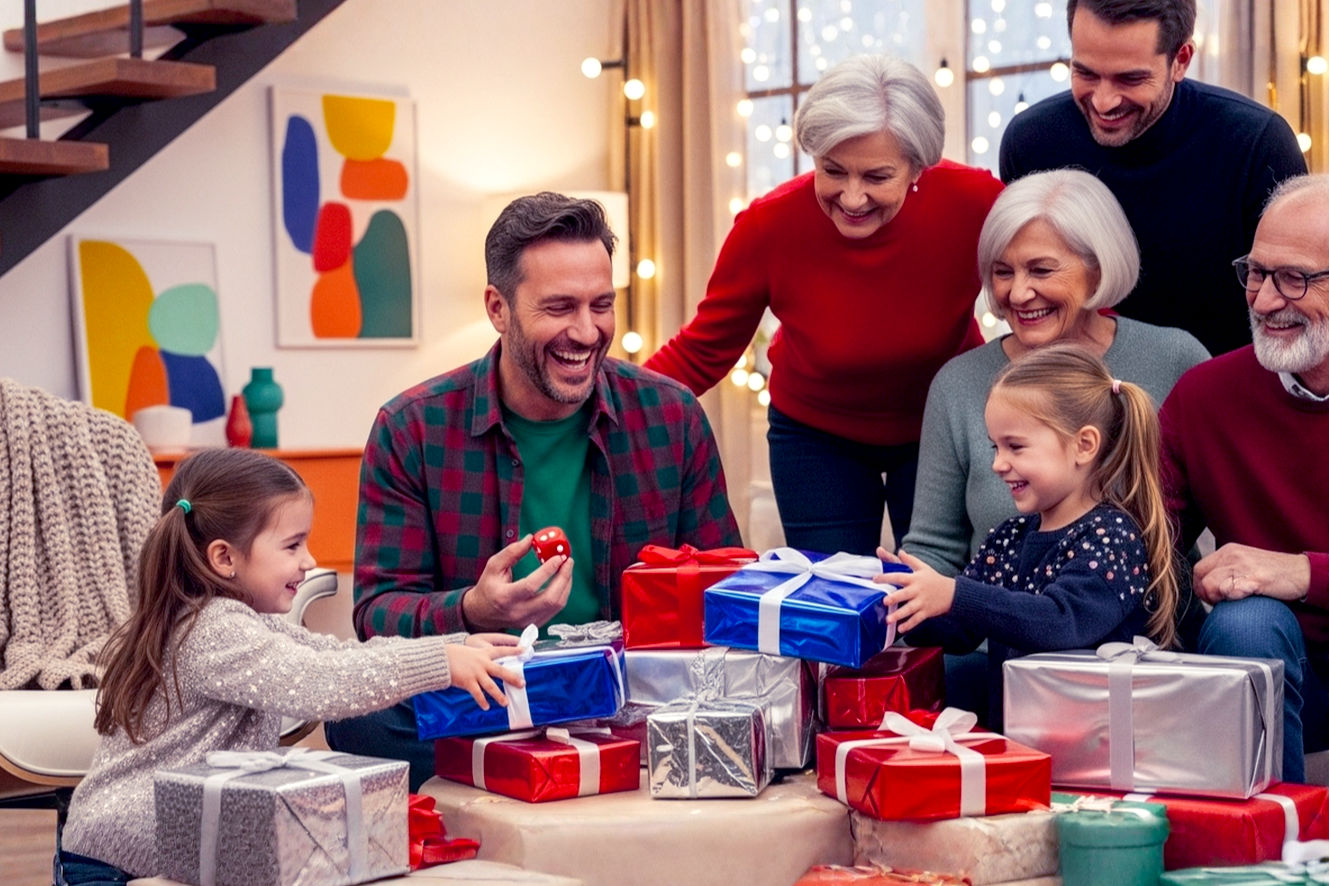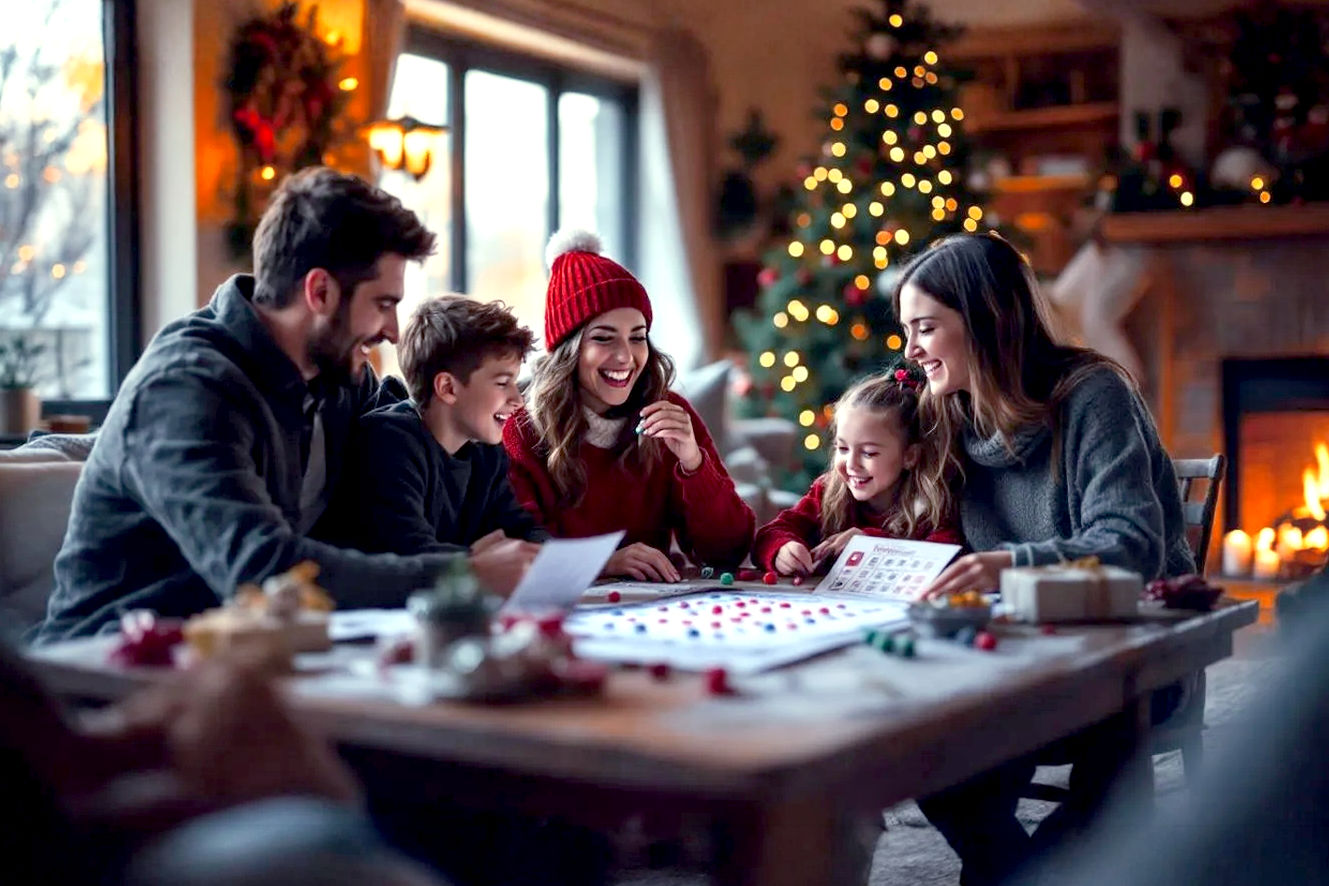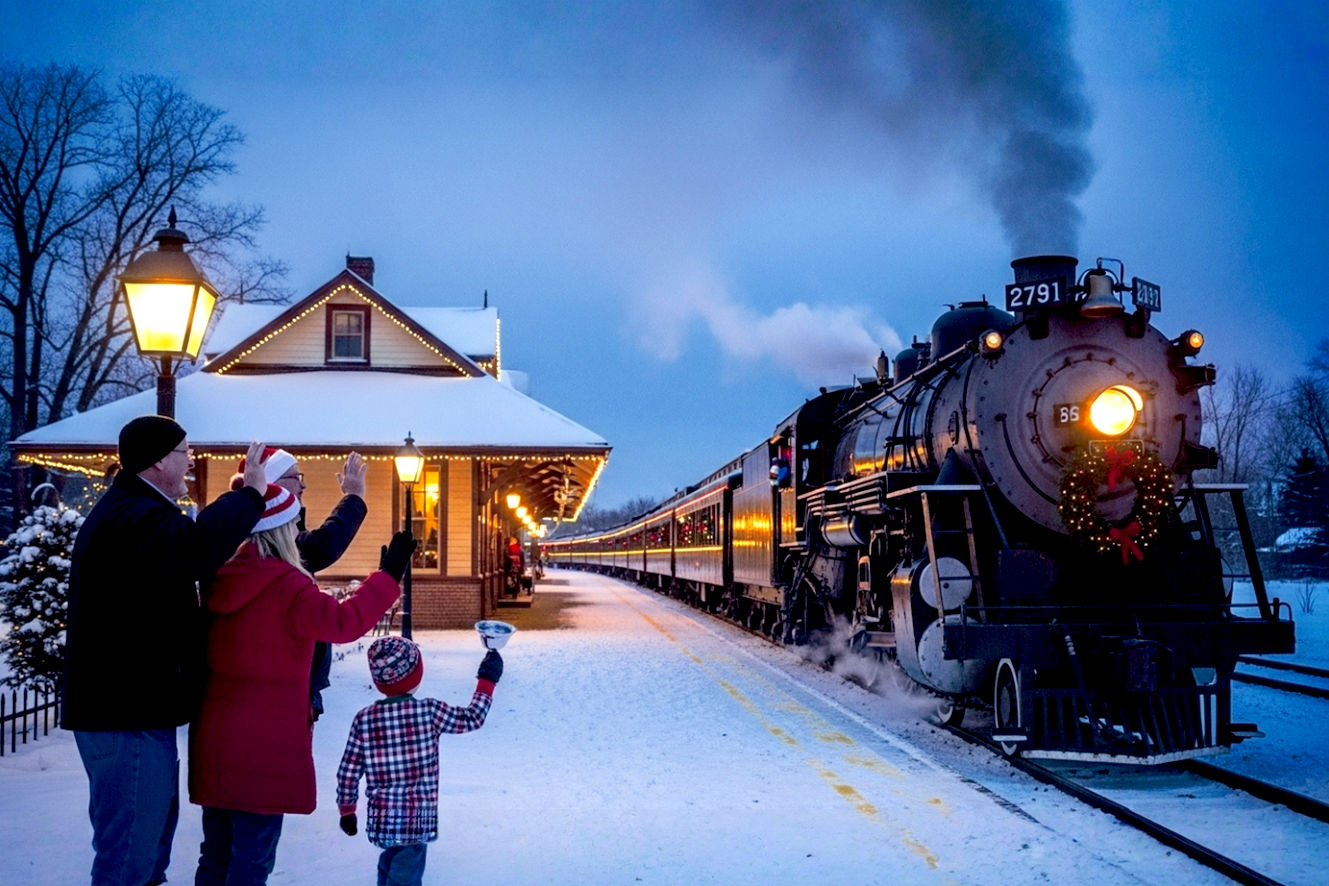This post may contain affiliate links. If you make a purchase through these links, we may earn a commission at no additional cost to you.
Christmas Eve is a magical time, full of anticipation and joy. While many families have traditions like decorating cookies or watching holiday movies, a Christmas Eve scavenger hunt can add a new layer of excitement. It transforms the evening into an unforgettable adventure, building suspense and creating lasting memories. Think of it as a personalized quest that leads to a special holiday prize—perhaps a new game to play together, matching pajamas, or even the first gift of the season.
This guide will walk you through the entire process, from the initial brainstorming to the final, triumphant reveal. You’ll learn how to design a hunt that’s perfect for your family, whether you’re planning for small children, teenagers, or a group of adults. We’ll cover everything you need to know about crafting creative clues, managing the logistics, and making the finale truly spectacular. Let’s make this year’s Christmas Eve the most memorable one yet.
The Magic of the Christmas Eve Scavenger Hunt
A scavenger hunt is more than just a game; it’s an experience. On Christmas Eve, this simple activity becomes a powerful way to engage everyone. It gets people off their phones and into the moment. It turns a quiet evening into a shared, dynamic event. Instead of just waiting for the next day, you’re actively participating in the magic of the season.
A New Tradition for Your Family
Creating new traditions is what makes a family unique. A scavenger hunt is a low-cost, high-impact tradition you can easily adapt each year. You can change the theme, the clues, and the final prize to keep things fresh. One year, the hunt might be a quest to find Santa’s missing sleigh bells, and the next, it could be a series of clues leading to the hidden Christmas pickle on the tree. The adaptability means it can grow with your family. As kids get older, the clues can become more complex. You can even create an annual tradition where the kids eventually take over planning the hunt for the parents.
Why It Works: Combining Anticipation and Fun
The psychology behind a scavenger hunt is fascinating. It taps into our natural love for puzzles and problem-solving. This isn’t just about finding things; it’s about solving a series of small mysteries. Each clue is a mini-achievement that builds toward a larger goal. On Christmas Eve, this works especially well because it channels the season’s intense anticipation into a fun, structured activity. Instead of just counting down the minutes, players are busy hunting, laughing, and working together. This shared sense of purpose and excitement makes the evening feel special and meaningful.
The Core Elements: What Makes It Special
Every great scavenger hunt has three key components. First, there are the clues, which are the lifeblood of the game. They must be engaging and relevant to the location. Second, you have the finds, which are the hidden objects or the destination of each clue. These can be anything from a small candy cane to the next clue itself. Third, and most importantly, is the grand finale, the final clue that leads to the ultimate prize. This should be the most exciting part of the hunt. It’s not just a prize; it’s the culmination of the journey, the big reward that everyone has been working for. Keeping these three elements in mind is critical to building a cohesive and exciting game.
Phase I – The Planning Foundation
Before you write a single clue, you need a solid plan. A well-thought-out foundation makes the rest of the process much easier. This is where you’ll make all the big-picture decisions that will shape the entire scavenger hunt experience. Don’t skip this part! The more you plan now, the smoother the event will run on Christmas Eve.
Defining Your Players: Ages and Abilities
The first step is to consider your audience. Who is playing? The clues you write for a five-year-old will be very different from the ones you write for a teenager or an adult. For younger children, you might use simple rhymes and pictures. For example, “I’m shiny and I sparkle, hang me on the tree, find the clue that’s waiting, right next to me.” This is a straightforward, literal clue.
For older kids and adults, you can get much more creative. Think about cryptic riddles, puzzles, or even codes to decipher. You can even use inside jokes or family history to make the clues more personal. If you have a mixed-age group, consider creating two different sets of clues—one simple, one complex—that lead to the same final prize. This ensures everyone feels challenged and included.
Choosing the Theme and Narrative: From Simple to Elaborate
A strong theme ties the whole hunt together. It gives the clues and the finale a sense of purpose. A simple theme might be “The Twelve Clues of Christmas.” A more elaborate narrative could involve a story where Santa’s reindeer have hidden presents and the players must find them to save Christmas. You could even integrate a character, like an elf named “Jingles,” who has left the clues behind. This is where your imagination can really shine.
The theme should guide your clue-writing process. If your theme is “Santa’s Naughty List,” the clues could be a series of riddles about items that might be found on the list. If it’s a “Winter Wonderland” theme, the clues might involve objects that represent different parts of a snowy landscape. The theme provides a cohesive framework for the entire game.
Setting the Scope: Indoor vs. Outdoor vs. Hybrid Hunts
Decide where the hunt will take place. An indoor hunt is a great choice for keeping things simple and warm. It’s perfect for younger kids and for focusing on the decorations you’ve already put up. You can hide clues in the Christmas stockings, behind the couch, or in the kitchen pantry.
An outdoor hunt can be exciting, especially in a snowy environment. You can hide clues in the mailbox, under a wreath, or even in a tree. Be sure to consider the weather and make the clues waterproof if necessary. A hybrid hunt combines both indoor and outdoor locations. This can make the hunt feel more expansive and adventurous. For example, the first clue might be inside, leading to a clue hidden in the mailbox, which then leads back inside to the final prize. Always ensure you have a “bailout” plan for the outdoor clues in case the weather turns bad.
Timing and Flow: Building the Right Pace
How long do you want the scavenger hunt to last? Most families find that 30-60 minutes is the sweet spot. This is long enough to feel like an adventure but not so long that people lose interest. The number of clues you use will determine the duration. A good rule of thumb is 5-10 clues for a 30-minute hunt. You can always adjust this based on the age of your players.
Pacing is also important. You want to make sure the clues lead players on a journey, not just from one spot to the next in a straight line. Try to make them double back sometimes. For instance, a clue in the kitchen could point to a spot in the living room, and a clue there could send them back to the pantry. This makes the hunt feel more like a proper search and less like a predictable path.
Phase II – Crafting the Hunt’s Components
With your foundation set, you can now move on to the creative part: writing the clues and deciding on the prizes. This phase is where your scavenger hunt truly comes to life. It’s important to get the details right, as these are the things that will delight your players and make the experience special.
Designing the Clues: A Guide to Creativity
Clues are the heart of the hunt. They should be challenging enough to be fun but not so difficult that they cause frustration. There are many different types of clues you can use to keep things interesting.
The Art of the Riddle: Fun and Challenging Clues
Riddles are a classic for a reason. They require players to think creatively and apply logic. The best riddles use figurative language and wordplay. For example, instead of a direct clue, you might say, “I wear a crown of lights, but I have no head. I stand tall in the corner, where the star is led.” The answer is the Christmas tree. Another one could be, “I’m cold and I’m sweet, a sugary treat. I hang on a branch, but I have no feet.” The answer is a candy cane. These kinds of clues get people thinking and talking as they work together to solve them.
Technical Clues: Using QR Codes and Digital Tools
For a more modern twist, you can integrate technology. QR codes are an excellent option. You can create a QR code that, when scanned with a smartphone, reveals the next clue. This adds a “cool factor” for tech-savvy teens and adults. Several free online generators exist to create these codes. You could also record a short audio clip or video message and link to it via a QR code. This gives you a chance to add a festive voice-over or a special message. Another idea is to use a text message service. Players could text a specific word to a number to receive the next clue. This adds a feeling of a secret mission and is perfect for older kids.
Physical Clues: Puzzles, Objects, and Sensory Elements
Clues don’t have to be just words on paper. A physical clue could be a small piece of a puzzle that players must assemble to reveal the next location. Another idea is to use a set of numbered items. For example, clue #1 could be found with a numbered stocking, and clue #2 with a numbered ornament. You could also use a sensory clue, like a small bag filled with cinnamon sticks and pine needles. The clue could say, “The next clue is where the scents of Christmas are strongest.” This forces players to use more than just their eyes and brains.
Scavenger Hunt Clue Examples (For Kids, Teens, and Adults)
For Kids (Ages 4-8):
- “I’m full of surprises and tied with a bow, you’ll find your next clue where the presents all go.” (Under the Christmas tree)
- “I’m a little red light that brightens the night, now look for your clue where the fire is bright.” (Near the fireplace)
- “I have a cold nose, but I don’t feel a chill, find your next clue by the reindeer on the sill.” (By the reindeer decoration)
For Teens (Ages 12-17):
- “I keep your secrets safe and your dreams in a scroll. The next clue’s waiting where the coal used to go.” (In a stocking)
- “I am a festive show of lights and sound, find your next clue where the music is found.” (Near the stereo or speaker)
- “The three wise men brought me, and I’m still quite a mystery. Your next clue is hidden in a part of our family’s history.” (In the family photo album)
For Adults:
- “I’m a collection of memories from holidays past. The next clue’s inside, a tale meant to last.” (In a box of old ornaments)
- “I’m a frosty beverage for a holiday cheer. The next clue’s waiting, somewhere very near.” (Inside the refrigerator, next to the eggnog)
- “In a place of reflection and daily routines, you’ll find the next clue among soaps and routines.” (In the bathroom, behind the mirror)
The Role of the “Finds”: From Treats to Treasures
The “finds” are the items at each location. For younger kids, a small piece of candy or a small toy is a great find. The excitement of finding a little treat at each step keeps them engaged. For older kids, the find can simply be the next clue. You can also hide little treasures that are related to the grand prize. For example, if the grand prize is a board game, the finds could be a different game piece at each stop.
The Big Reveal: Planning the Grand Finale
The final clue should be the most dramatic. It should lead to a location that’s either a surprise or a spot that holds special significance. The big reveal shouldn’t be anticlimactic. For example, if the final clue leads to the closet where the gift is hidden, the clue could say, “You’ve solved the hunt and all the riddles. Now find your treasure where winter snows and you can wear mittens.” This adds a sense of poetic justice to the end of the quest. The prize itself can be anything: a new video game, a gift card, a pair of special holiday pajamas, or even tickets to a show. The important thing is that it feels like a genuine reward for the effort.
Phase III – The Logistics and Setup
The planning is done, and the clues are ready. Now comes the technical part: preparing and setting up the hunt. This phase requires attention to detail. A mistake here, like a forgotten clue, can stop the entire game in its tracks. A little preparation goes a long way.
Preparing the Materials: Checklists and Tips
Gather all your materials in one place. This includes the clues, the finds for each location, and the final prize. Make a checklist to ensure you don’t miss anything. Print the clues on nice paper, maybe even singeing the edges to make them look like old parchment for a rustic feel. You can also use different colors for each clue if you’re running separate hunts for different age groups. Make sure you have pens or pencils for people to write down their solutions, a small bag or basket to collect their finds, and any digital devices they might need for QR codes.
The Critical Setup: Hiding Clues and Prizes
This is the most important step before the hunt begins. You must hide the clues in the correct order. The first clue should be given to the players at the start. It will point them to the location of the second clue. The second clue will point to the third, and so on. It is crucial to hide the clues in the right sequence. The final clue will lead to the grand prize.
A common pitfall is hiding the first clue in a way that players can accidentally skip to the last one. A good practice is to create a “master plan” document. This is your personal map of the hunt. It should list each clue, its location, the solution, and what it points to next. This document is your safety net. It allows you to double-check that all clues are in place and in the right order.
The “Master Plan” Document: Your Scavenger Hunt Blueprint
A master plan is essential. Don’t rely on your memory. On a piece of paper or a digital document, create a simple table. The columns should include:
- Clue Number: 1, 2, 3, etc.
- Clue Text: The actual riddle or puzzle.
- Find/Prize: The object to be found at this location.
- Hiding Spot: The precise location where the find is hidden.
- Next Clue’s Hiding Spot: Where the next clue is hidden.
This document serves as your guide to the entire process. It’s what you’ll use to set up the hunt and, if needed, to help a player who is stuck. It’s a non-negotiable tool for a successful scavenger hunt.
Troubleshooting Common Scenarios: What to Do When…
Even with the best plan, things can go wrong. A clue might be too hard, or a player might accidentally knock it over and lose it. Here’s what you can do:
- A Clue Is Too Hard: If a group is stuck, give them a hint. The master plan document is perfect for this. You can give a simplified version of the clue or a hint about the location.
- A Clue Is Lost: If a clue disappears, you can simply “find” it yourself and point the players in the right direction. Or, refer to your master plan and give them the information for the next location.
- A Player Is Frustrated: Remind everyone that it’s just for fun. Encourage teamwork and collaboration. The goal is to have a good time, not to win. The spirit of the hunt is more important than the competition.
The Grand Finale: Making It Memorable
The end of the hunt is the most important part. You’ve built up all this suspense, and the finale must deliver. This is the moment that will truly make the evening special and worthy of becoming a yearly tradition.
The Climax: The Final Clue and the Big Prize
The final clue should be more than just a destination. It should be a moment of triumph. It could be a message that says, “Congratulations! You have completed the festive quest. Now look where the first clue started, for that’s where the grand prize is guarded.” This brings the story full circle and gives a satisfying sense of completion. The prize itself doesn’t have to be expensive, but it should be thoughtful and relevant to the season. New Christmas pajamas, a board game for the whole family, or a festive movie bundle are all great options.
Post-Hunt Celebration: Beyond the Final Find
The hunt is over, but the fun doesn’t have to stop. Once the prize is found, have a post-hunt celebration. Maybe you all gather around and open the gift together. Or, you could have hot cocoa and a special Christmas treat waiting for everyone. This adds to the feeling of a shared victory and lets everyone bask in the glow of their accomplishment. The post-hunt celebration is an important part of the entire ritual, cementing the memory of the evening.
Documenting the Adventure: Preserving the Memory
Don’t forget to take photos or videos! Capture the look on everyone’s faces when they find a tricky clue or the excitement of the grand finale. These images will become cherished memories you can look back on for years to come. You could even create a special holiday scrapbook page or a short video montage each year. This makes the hunt a tangible tradition you can literally hold onto.
Pro-Tips for Advanced Hunt Planners
Ready to take your scavenger hunt to the next level? These advanced tips can make your game even more engaging and epic.
Integrating Technology for a Modern Hunt
Instead of just using QR codes, you can build a more complex digital hunt. Use a dedicated scavenger hunt app or website. Some services allow you to upload clues, create a map, and even provide a timer. You could also use augmented reality (AR) apps. For example, an AR app could reveal a virtual Christmas elf on the screen when a player points their phone at a specific object. The elf could then give them the next clue. For the truly technical, you could even set up a simple webpage where each clue is a password needed to unlock the next page. This adds a sophisticated, high-tech feel to the hunt.
Multi-Day or Multi-Location Hunts
For an extra-special event, extend the hunt over several days. Each night, a new clue could appear. The hunt could lead to a different part of the house each time, or even to different locations around town. For example, one clue could lead to a favorite local ice cream shop, and the next clue could be hidden at a community park. This is a great way to build anticipation throughout the week leading up to Christmas Eve. Just remember that a multi-day hunt requires a bit more planning and organization to ensure you have all your clues and finds ready to go.
Theming Beyond Christmas: Expanding the Tradition
While this guide focuses on Christmas Eve, the scavenger hunt tradition can be adapted for any holiday or special occasion. You can do a New Year’s Eve hunt leading to midnight, a Valentine’s Day hunt leading to a romantic dinner, or even a birthday hunt leading to the presents. The same principles of planning, clue-crafting, and grand finales apply. This is a versatile tradition that can be used to celebrate any milestone or event, making it a valuable tool for creating joy and connection all year long.
In the end, a Christmas Eve scavenger hunt is all about creating a new tradition that is uniquely yours. It’s not about perfection; it’s about the shared experience. The laughter, the teamwork, the puzzle-solving—that’s the real magic. So, gather your materials, start planning, and get ready for a festive adventure your family will cherish for years to come.






